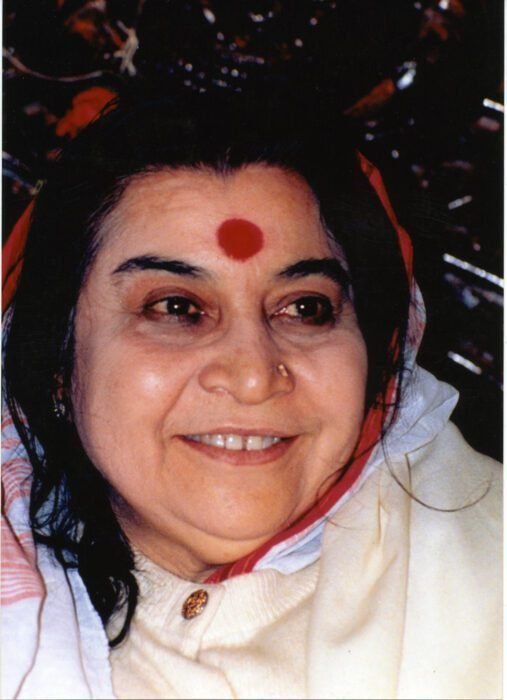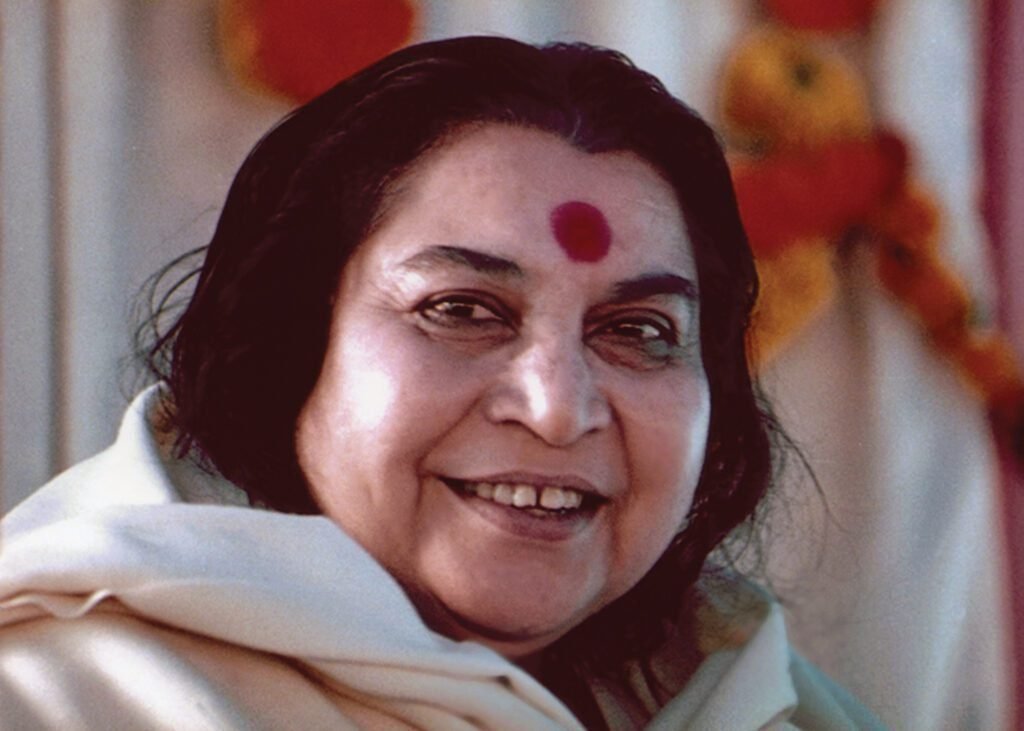In Sanskrit, the root man means to meditate, tra means ‘instrument of Mantras are sacred sounds that have an effect on our subtle system. We use them to invoke the deities, the aspects of the Divine that reside on our chakras.
However, without first connecting yourself to the whole, without Self-realisation or yoga (union with the Divine), the contents of this article will not be of much practical help.
A mantra is nothing but a thought which is vibrated. Any thought that is vibrated is a mantra’ – Shri Mataji Nirmala Devi, Vienna, 4 Sept 1983
Mantras are to be such that they should not be mechanical, just saying something mechanically. You should say it from your heart. Again, if you do not say mantras through your heart, the mantra is not siddha. Means you may go on saying one hundred times, it will have no effect.
Siddha mantra is that, that you say, that it has an effect, it works. If it does not work, then your mantra has no meaning. – Shri Mataji Nirmala Devi, Diwali Puja, London, 6 Nov 1983

Now, the name of your Mother is very powerful. You know that is the most powerful name than all other names, the most powerful mantra. But you must know how to take it. With that complete dedication you have to take that name – not like any other name.
Use Of The Nominative Form Of Sanskrit
In this article all the names of the deities have been given with nominative case endings, which is generally how we are used to seeing them. This is appropriate for a mantra starting: Aum twameva sākshāt.
When Not To Use ” Shri “
An asterisk (*) indicates when not to use ‘Shri’ before a name. These names all relate to specific rakshasas or demons, according to Shri Mataji’s advice to the UK collective in 1981 (while compiling the 108 names of Lord Jesus Christ) and on occasions thereafter.
For example:
*Mahish’āsura ghātinī…………………….The slayer of Mahishasura would then become:
Aum twameva sākshāt Mahish’āsura ghātinī sākshāt
Shrī Ādi Shakti Mātājī Shrī Nirmalā Devyai namo namah
The principal mantras used in Sahaja Yoga
The Aum is the integrated power of the Adi Shakti (Holy Spirit). Its essence is expressed in Shri Ganesha at the Muladhara chakra
and its manifestation is Lord Jesus Christ at the Agnya chakra. It is the primordial reverberation that emanates at the beginning of creation and, as it contains the seeds of the three great powers .
| Divine Energy | Channel | Nervous system | Aspect | Quality |
| Mahākālī | Idā | Left sympathetic | Tamo guna | Desire, existence |
| Mahāsaraswatī | Pingalā | Right sympathetic | Rajo guna | Action, thought, creation |
| Mahālakshmī | Sushumnā | Parasympathetic | Sattva guna | Evolution, awareness |
Mantra table for the chakras
| Muladhara Chakra | ||
| Left & Centre | Sacrum Bone | Right |
| Shrī Ganesha -Innocence, wisdom | Shrī Gaurī-Kundalinī Mātā – Seat of Kundalini, the energy of the Holy Spirit within us,purity and chastity | Shrī Kārttikeya Shrī Rākshasa-hantrī – Destruction of negativity,valour, dynamism |
| Swadhishthana Chakra | ||
| Left | Centre & Right | Right |
| Shrī Nirmala Vidyā Pure knowledge Shrī Shuddha Iccha-Pure desire | Shrī Brahmadeva–Saraswatī Creativity, aesthetics and action | Shrī Hazrat-Ãli Fāt. ima -Balance, sustenance (Ali relates to right Swādhishthāna, Fāṭima to left Nābhi) |
| Nābhi Chakra | ||
| Left | Centre | Right |
| Shrī Gṛuha Lakshmī -Auspiciousness and sustenance of the family and household | Shrī Lakshmī-Vishnu -Dharma (righteousness), sustenance and evolution | Shrī Rāja Lakshmī Shrī Shesha Shrī Nirmala Chitta – Energy of the liver,Blessings in terms of worldly powers and prosperity |
| Void (Bhava-sāgara) | ||
| Shrī Ādi Guru Dattātreya -Guru principle, principle of mastery and knowledge | ||
| Heart (Anāhata) Chakra | ||
| Left | Centre | Right |
| Shrī Shiva-Pārvatī – Seat of the Atma (Spirit),hence, existence, love and joy. Relationship to the mother | Shrī Durgā Mātā–Jagadambā – Sense of security and complete motherly protection | Shrī Sītā-Rāma -Responsible and righteous behaviour. Relationship to the father and to authority |
| Shrī Ātmā-param’ātmā – | ||
| Lalitā Chakra | Shrī-Chakra | |
| Shrī Lalitā chakra swāminī – Expresses the power of protection of the Adi Shakti (Holy Spirit) | Shrī Shrī-chakra swāminī- Expresses the willpower of the Adi Shakti (Holy Spirit) | |
| Vishuddhi Chakra | ||
| Left | Centre | Right |
| Shrī Vishnumāyā -Self-esteem. Brother -sister relationship | Shrī Rādhā-Kṛishna – Communication and collectivity. Detached witness state. Diplomacy | Shrī Yashodā Shrī Vitthala-Rukminī- Diplomacy, respect for others. Sense of solidarity |
| Shrī Sarva mantra siddhi – Power of all mantras | Allāh hu Akbar – God is great | |
| Hamsa Chakra | ||
| Shrī Hamsā-chakra swāminī – Discrimination and common sense | ||
| Agnya Chakra | ||
| Left (superego) | Centre | Right (ego) |
| Shrī Mahāvīra Shrī Mukti dāyinī Shrī Mahat-mānasa – Capacity to overcome the superego. Freedom from conditionings. Going beyond fears, granting liberation. Acknowledging that the primordial superego belongs to God | Shrī Yeshu-Māriā Mātā (Shrī Mary-Jesus) The Lord’s Prayer – Forgiveness, truth and resurrection | Shrī Buddha Shrī Mahat-ahaṁkāra Capacity to overcome the ego. Going beyond thoughts and doubts. Acknowledging that the primordial ego belongs to God |
| Back | Front | |
| Shrī Mahā-ganesha Shrī Mahā-bhairava Shrī Hiranya-garbha Centre of vision, clearing the weight of the past and karmas (accumulated impact of past actions) | Shrī Mahā-kārttikeya Shrī Mahā-hanumāna – Removing futuristic or supraconscious tendencies | |
| Ekādasha Rudra | ||
| Shrī Ekādasha Rudra – Eleven destroying powers of Shiva, which are under the control of Christ. Faith in God | ||
| Virāt Chakra | ||
| Shrī Nirmala Virāt-aṅganā – The supreme power of the absolute cosmic Being | ||
| Sahasrāra Chakra | ||
| Shrī Kalki – The tenth incarnation of Shri Vishnu, the return of the Christ The King. Collective consciousness | ||
| Left channel (Idā nādī) | Centre channel (Sushumnā nādī) | Right channel (Piṅgalā nādī) |
| Shrī Mahākālī–Bhairava – Purifying emotions and desire | Shrī Mahālakshmī- -Ganesha – Evolution and ascent | Shrī Mahāsaraswatī–Hanumāna – Blessing the fruits of physical and mental activities |
| Shrī Icchā-shakti – Power of desire | Shrī Dharma-shakti – Power of Dharma | Shrī Kriyā-shakti – Power of action and dynamism |
| Shrī Mahākālī- -Bhadrakālī-Kālī-Kalki -Destroying left-sided negativity and entities | ||
The Maha mantras – (three great mantras)

Aum twameva sākshāt
Shrī Mahālakshmī Mahāsaraswatī Mahākālī
Trigun’ātmikā Kundalinī sākshāt
Shrī Ādi Shakti Mātājī Shrī Nirmalā Devyai namo namah
Aum twameva sākshāt Shrī Kalki sākshāt
Shrī Ādi Shakti Mātājī Shrī Nirmalā Devyai namo namah
Aum twameva sākshāt Shrī Kalki sākshāt
Shrī Sahasrāra-swāminī Moksha-pradāyinī Mātājī
Shrī Nirmalā Devyai namo namah








